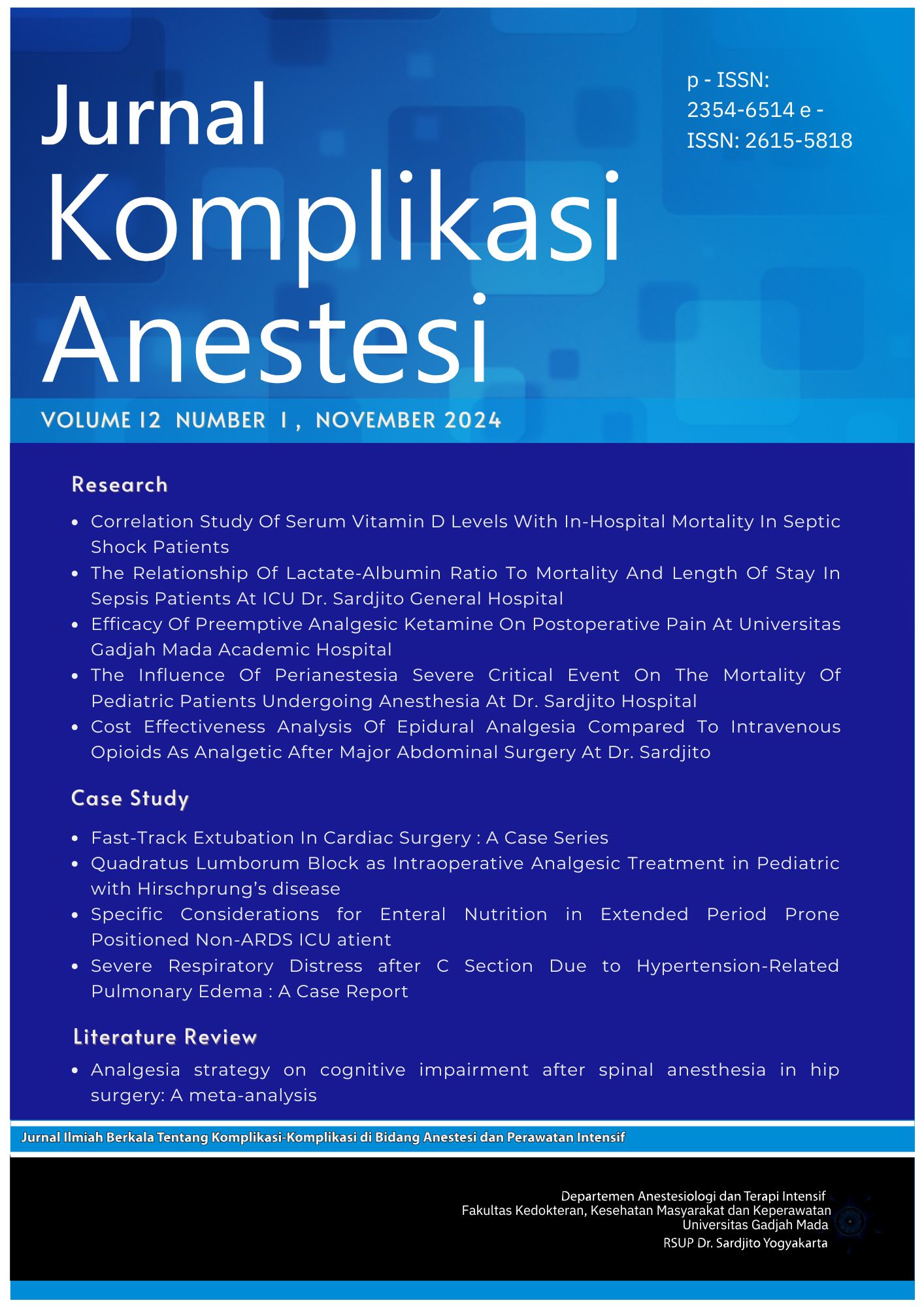Quadratus Lumborum Block as Intraoperative Analgesic Treatment in Pediatric with Hirschprung’s disease
Abstract
Overview: A 4-year-old boy diagnosed with Hirschsprung's disease since birth will undergo a planned Duhamel procedure. Internationally, the prevalence of Hirschsprung's disease is approximately 1 in 1,500 to 1 in 7,000 live births and usually requires immediate intervention through surgical procedures. The extended length of pediatric surgeries presents a unique challenge for anesthesiologists aiming to minimize the use of opioids, considering their less desirable effects in this patient population. In this case, we opted for the use of quadratus lumborum block (QLB) as intraoperative analgesia. This refers to a meta-analysis by Wen-li Zhao et al, all suggest that QL block offers more effective postoperative pain relief in children after lower abdominal surgeries.
Management: After the patient was intubated, we performed a quadratus lumborum block using an anterior approach as an intraoperative analgesia technique. The local anesthetic used was 0.375% ropivacaine + 4 mg dexamethasone, volume 10 ml on both sides. Dermatom covered anterior QL block includes T4 to T12-L1, blocks the anterior and the lateral cutaneous branches of the nerves
Result: No additional opioid dose administered during the surgical procedure. Conclusion: The QLB in pediatric patients is quite effective in managing pain during surgery for patients undergoing the Duhamel procedure.
Copyright (c) 2024 Pita Mora Lesmana, Marilaeta Cindryani Ra Ratumasa, I Made Subagiartha, Tjokorda Gde Agung Senapathi

This work is licensed under a Creative Commons Attribution-ShareAlike 4.0 International License.
The Contributor and the company/institution agree that all copies of the Final Published
Version or any part thereof distributed or posted by them in print or electronic format as permitted herein will include the notice of copyright as stipulated in the Journal and a full citation to the Journal.

















